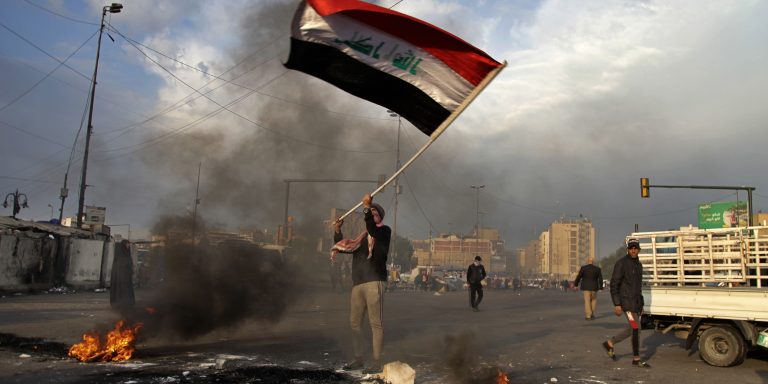INTELBRIEF
January 9, 2020
IntelBrief: What Happens Next with the Tensions Between Iran and the United States?

- Iran responded to the death of IRGC-QF Major General Qassim Soleimani by launching nearly two dozen ballistic missiles at Iraqi bases where American troops are stationed.
- On January 8, U.S. President Donald Trump announced further sanctions against Iran but also suggested that ‘the United States is ready to embrace peace with all who seek it.’
- Trump called on NATO to become more involved in the Middle East, hinting at the possibility for diplomatic overtures to supplant military force.
- Although tensions may be deescalating in the immediate term, few know what to expect from Iran moving forward, as Tehran works to determine what additional steps it will take to respond to the killing of Soleimani.
.
On January 7, Iran responded to the death of IRGC-QF Major General Qassim Soleimani by launching nearly two dozen ballistic missiles at Iraqi bases where American troops are stationed. The following day, U.S. President Donald Trump announced further sanctions against Iran but also suggested that ‘the United States is ready to embrace peace with all who seek it.’ After harshly criticizing the Joint Comprehensive Plan of Action (JCPOA), or Iran nuclear deal negotiated by the Obama administration and European allies, Trump noted that Iran appears to be standing down. Iranian Foreign Minister Javad Zarif announced Iran’s desire to deescalate tensions when he took to Twitter after the attack, proclaiming that Iran ‘took and concluded proportionate measures in self-defense,’ adding that ‘We do not seek escalation or war.’ The attack failed to kill any Americans, and some have speculated that the strike was merely an attempt to assuage Iran’s domestic population and ultimately deescalate the conflict with Washington.
Trump called on NATO to become more involved in the Middle East and highlighted several countries by name, including the United Kingdom, Germany, France, Russia, and China, asking for their assistance in preventing Iran from destabilizing the region. The President also hinted at the possibility for diplomatic overtures to supplant military force, but did emphasize that the United States will not sit by idly pending further Iranian provocations. But it could take months for tangible progress on renegotiating the Iran nuclear deal, if the Iranians are inclined to do so at all. In the meantime, how far might Tehran push the envelope in using its proxies to conduct attacks throughout the region and if there is a replay of events similar to what occurred in the summer of 2019, how might the United States respond?
Although tensions may be deescalating in the immediate term, few know what to expect from Iran moving forward, as Tehran works to determine what additional steps it will take to respond to the killing of Soleimani. If Iran does decide to strike out against the United States, it will likely do so through proxy forces in Yemen, Syria, Lebanon, and Iraq, all of which could unleash a campaign of asymmetric tactics against the United States and its allies throughout the Middle East. Tehran could also look to up the ante against either Saudi Arabia or Israel, in turn dragging other countries in the Middle East into a broader, region-wide conflict. At the same time, Tehran will look to calibrate its response to avoid conventional conflict with more capable military powers, particularly the United States. Iran’s weapons development programs are intended not primarily to enable Iran to prevail in a conventional conflict, but rather to sufficiently arm Iran’s allies and proxies in their specific circumstances.
While the Trump administration may be sanguine about how recent events unfolded, Iran’s leaders recognize that they have lost their chief strategist and the architect of their quest to cement regional dominance. Since his death last week, counterterrorism analysts have been debating Soleimani’s significance and arguing over how difficult it will be for his replacement, General Esmail Qaani, to continue implementing his predecessor’s vision for Iranian hegemony in the Middle East. Protest movements in Iraq and Lebanon will likely prove to be a significant challenge to Iran, as both of those countries push back against encroaching Iranian influence. The next few weeks will be absolutely critical to how Iran will respond. In between this week’s conventional response by Tehran and the subsequent expected asymmetrical retaliation by its proxies, there is a real opportunity for continued de-escalation and aggressive diplomacy. To have any chance at success, this will require muted rhetoric by leaders in Washington and Tehran and a clearly articulated strategy for how the Trump administration plans to escape the cycle of tit-for-tat reprisals, veiled threats, and mounting violence.
.
For tailored research and analysis, please contact: info@thesoufancenter.org